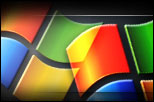Microsoft comes around on SaaS

Microsoft has come around to Google's way of thinking on Software as a Service (SaaS) -- announcing a beta program for a multi-tenant service that will serve multiple Exchange and SharePoint customers from a single software instance.
To date, Microsoft has only offered software as a service via dedicated servers to customers with over 5,000 seats.
The alternative model, offered by the likes of Google and typically associated with Salesforce.com is referred to as "multi-tenant" SaaS.

Multi-tenancy sees multiple customers served by a single software instance on the provider's server -- each customer's deployment being contained within a virtual partition. Within that virtual partition, an end user can still customise their experience -- either through look and feel (branding or "skins"), integration with other applications, access control or other custom objects, such as unique fields or workflow processes.
The multi-tenancy model is considered more efficient to a multi-instance architecture as it enables a number of customers to share the licensing and management cost of a single software instance.
Gartner analyst Matt Cain believes that Microsoft is taking an interest in multi-tenancy as "a defensive measure to combat potential incursions from suppliers such as Google".
Cain says that while offering a service via dedicated servers is "pretty easy ... the real challenge is multi-tenant -- many companies on a battery of services. This is the model Google uses. Providing large-scale SaaS services for business requires significant expertise in high availability, security, multi-tenant architectures, network topologies and problem resolution."
Microsoft already has a beta program in place for Titan -- a multi-tenant on-demand version of its CRM software. With Exchange and SharePoint becoming available by Q4, Cain expects that Microsoft's cash-cow product, Office, will inevitably be offered in a similar fashion in time.
Currently, the only online version of Office is Office Workspace Live, which still requires a user to have a local version of Office on their desktop.
Cain says Microsoft is in the process of retrofitting its existing software to the multi-tenant server model.
"It won't be until the next version of Exchange, due in 2011, that its core products are better architected to run in a multi-tenant SaaS model," he said.
While Microsoft's initial foray into multi-tenancy "should work fine from a customer's perspective", Cain says Microsoft will only realise the model's true savings for itself once it has built a multi-tenant specific version of its platform.
"The benefit of architecting a multi-tenant-specific version is to reduce the hoster's own costs via more efficient operations -- coming mostly from management, storage, processor and energy efficiencies," he said. "The consequential economies will allow it to more cost-effectively compete with Google."
Gartner is predicting that the SaaS model will "dramatically change the way businesses provision, operate and consume IT services during the next five years".
"We believe that 20 percent of enterprise e-mail seats will use a SaaS provisioning model by 2012, compared with one percent in 2007," Cain said.